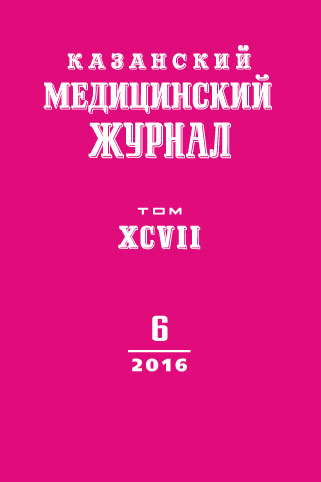Реактивность церебральных сосудов у пациентов с очагами ушиба головного мозга и возможности её фармакологической коррекции
- Авторы: Гарифуллин Р.Ф.1,2, Данилов В.И.1, Каримов Р.Х.1,2
-
Учреждения:
- Казанский государственный медицинский университет
- Городская клиническая больница №7
- Выпуск: Том 97, № 6 (2016)
- Страницы: 903-908
- Раздел: Теоретическая и клиническая медицина
- Статья получена: 18.11.2016
- Статья опубликована: 15.12.2016
- URL: https://kazanmedjournal.ru/kazanmedj/article/view/5641
- DOI: https://doi.org/10.17750/KMJ2016-903
- ID: 5641
Цитировать
Полный текст
Аннотация
Цель. Оценка димефосфона как средства коррекции нарушенной реактивности церебральных сосудов у пациентов в остром периоде черепно-мозговой травмы лёгкой и средней степени тяжести.
Методы. В исследование включены 40 пациентов в остром периоде черепно-мозговой травмы, находившихся на стационарном лечении в отделении нейрохирургии Городской клинической больницы №7 г. Казани. Все пациенты были разделены на две группы: в первую группу вошли пострадавшие, в медикаментозное лечение которых не включён димефосфон, во второй группе проводили лекарственную терапию, тождественную первой, но дополнительно назначали 15% раствор димефосфона по 15 мл 3 раза в день внутрь в течение 12 дней. Оценку мозгового кровотока осуществляли методом транскраниальной допплерографии с помощью анализатора скорости кровотока «Сономед 300М». Пациентам ежедневно проводили функциональные пробы (компрессионный тест, гиперкапнический тест, гипокапнический тест) с 1-х по 12-е сутки пребывания в стационаре.
Результаты. Проведённая работа подтверждает нарушения церебральной реактивности у пациентов в остром периоде черепно-мозговой травмы. Кроме того, установлено, что у пациентов, получавших димефосфон в составе комплексной терапии в дозе 15 мл 15% раствора 3 раза в день, показатели реактивности мозговых сосудов (индекс вазомоторной реактивности, коэффициент овершута) восстанавливались достоверно быстрее.
Вывод. У всех пострадавших в остром периоде черепно-мозговой травмы с очагами ушиба головного мозга происходит нарушение реактивности мозговых сосудов; процесс восстановления реактивности церебральных сосудов у пациентов с черепно-мозговой травмой ускоряется при включении в комплексное лечение димефосфона.
Ключевые слова
Об авторах
Ренат Фаритович Гарифуллин
Казанский государственный медицинский университет; Городская клиническая больница №7
Автор, ответственный за переписку.
Email: doctor-nerv@mail.ru
Валерий Иванович Данилов
Казанский государственный медицинский университет
Email: doctor-nerv@mail.ru
Равиль Хашимович Каримов
Казанский государственный медицинский университет; Городская клиническая больница №7
Email: doctor-nerv@mail.ru
Список литературы
- Гайдар Б.В., Семенютин В.Б., Парфёнов В.Е., Свистов Д.В. Транскраниальная допплерография в нейрохирургии. СПб.: Элби. 2008; 58-60.
- Данилов В.И., Панкова В.П., Студенцова И.А., Визель А.О. Экспериментально-клиническое обоснование применения димефосфона при операционной и черепно-мозговой травмах. Нейрохирургия. 2002; (2): 43-48.
- Кондаков Е.Н., Семенютин В.Б., Гайдар Б.В. Тяжёлая черепно-мозговая травма. СПб.: РНХИ им. А.Л. Поленова. 2001; 216 с.
- Лихтерман Л.Б. Сотрясение головного мозга. Нейрохирургия. 2002; (2): 4-7.
- Carney N., Totten A.M., OʼReilly C. et all. Guidelines for the management of severe traumatic brain injury. J. Neurosurgery. 2016; 0: 22-23. https://dx.doi.org/10.1227/NEU.0000000000001432
Дополнительные файлы







